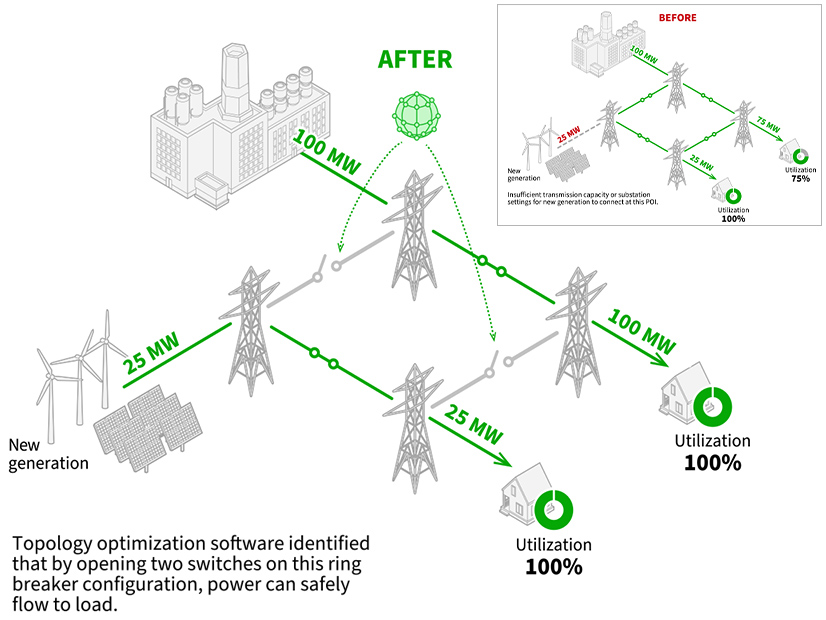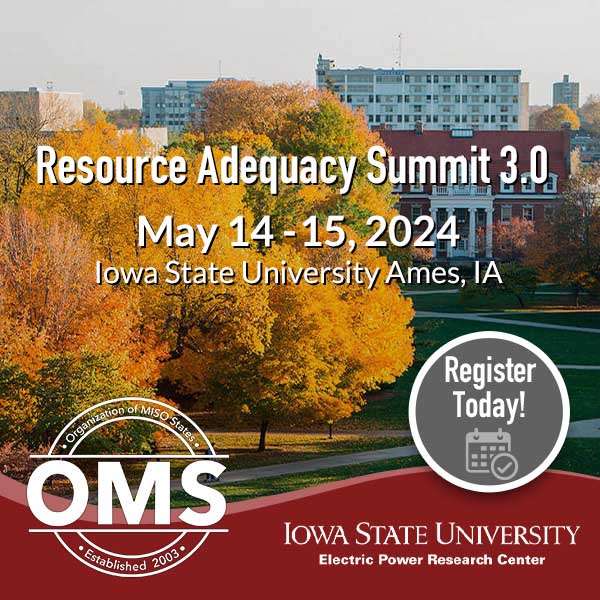
An RMI study into the applicability of grid-enhancing technologies (GETs) on the PJM grid found they could save consumers hundreds of millions of dollars a year and speed renewable development when used as an alternative to reconductoring and rebuilding lines.
“With growing demand for electricity to power our lives and an influx of clean energy projects under development, the U.S. grid needs to expand, fast. Grid-enhancing technologies can be deployed in a matter of months and offer a multifaceted solution — they unlock greater efficiency on the grid, keep electricity rates down and enhance reliability throughout the energy transition,” Katie Siegner, RMI electric sector expert, said in an announcement of the study. The study was funded by Amazon and included analysis by Quanta Technology.
The study, released Feb. 15, looked at how dynamic line ratings (DLRs), topology optimization (TO) and advanced power flow controls (PFCs) could be used in the analysis PJM conducts to determine network upgrades required for generation interconnection requests. It modeled the feasibility of using the technologies for projects in the PJM interconnection queue and compared costs to reconductor or rebuild lines to GET alternatives.
Some of the greatest cost-saving potential came from PFCs, which modulate the reactance on a line to redirect power from congested lines to those with available capacity. The study identified 69 transmission overloads that could be addressed by flow controllers, with the potential to reduce interconnection costs for associated projects by $523 million over reconductoring or rebuilding lines. PFCs are limited to circumstances where there would be multiple paths for power to flow and are best suited for transmission under 550 kV.
The study found DLRs were applicable to 49 overloads and could reduce costs by $504.5 million by increasing line ratings under favorable conditions. The technology uses sensors and existing data about installed infrastructure to change line ratings based on how factors such as wind speed, air temperatures and conductor sag can affect the amount of power a line can handle before overheating. Although overall summer line capacity could be increased by 17% over current static ratings, the study acknowledges dynamic ratings vary with the weather and therefore are more suited to making energy deliverable than bringing new capacity online.
Topology optimization could reduce the cost to alleviate 72 overloads by $273 million by using software to determine alternate grid configurations that reroute power around constraints, such as opening or closing breakers automatically.
The report states GETs can significantly reduce the amount of time to make the necessary grid adjustments to bring new generation online, addressing concerns PJM has raised about the balance of deactivations and new resource entry, as well as reducing energy costs by speeding development of low-cost renewables. It estimates ratepayers could save $1.1 billion in annual production costs by 2033 against a $0.1 billion installation cost for GETs.
“These findings make a compelling case for more widespread deployment of GETs in PJM, where today there are only a handful of pilots and proposed projects. PJM and its stakeholders have an opportunity to spur broader uptake of these technologies by leveraging the growing proof points, modeling tools and changing regulatory landscape that are driving GETs adoption,” the study said.
It calls for PJM and utilities to train staff in GET deployment and for regulators to draft new guidance and oversight for their usage, arguing adoption in the U.S. is behind Europe due to a lack of understanding and few incentives to seek cheaper transmission options. Generation developers also can benefit from evaluating GETs as an alternative to PJM’s recommended network upgrades for their projects.
There have been some inroads for DLR usage in PJM, in which a pilot program to install the technology on PPL’s Juniata-Cumberland line resulted in line capacity increasing 18% under normal conditions and 10% under emergency conditions, Joseph Lookup, PJM’s director of asset management, told RTO Insider last year. (See Grid-enhancing Technologies Poised for Growth with Federal Funds.)
Speaking in the announcement of the study, Alexina Jackson, AES vice president of strategic development, said it presents an opportunity for greater understanding of how new technologies can benefit the grid.
“There are numerous market-ready technologies that can optimize our electrical grid and accelerate the future our customers need. Realizing how to model the functionality and quantify the benefits of these technologies is a barrier to the implementation of grid-enhancing technologies,” she said.

